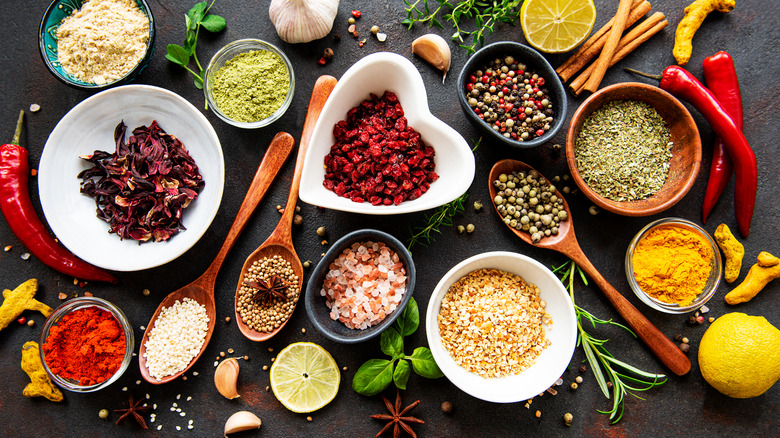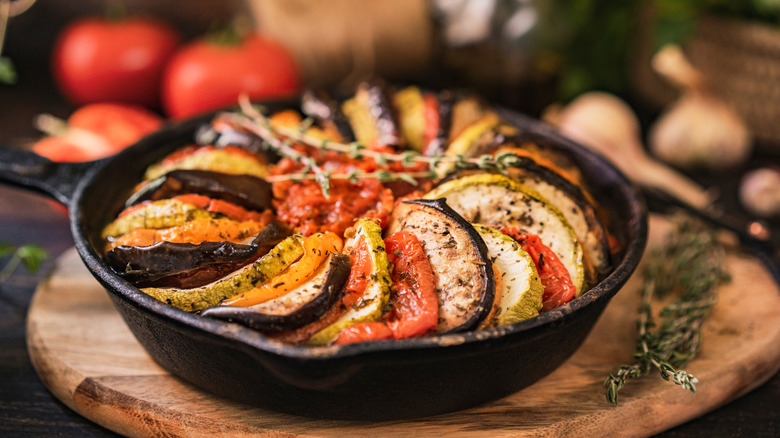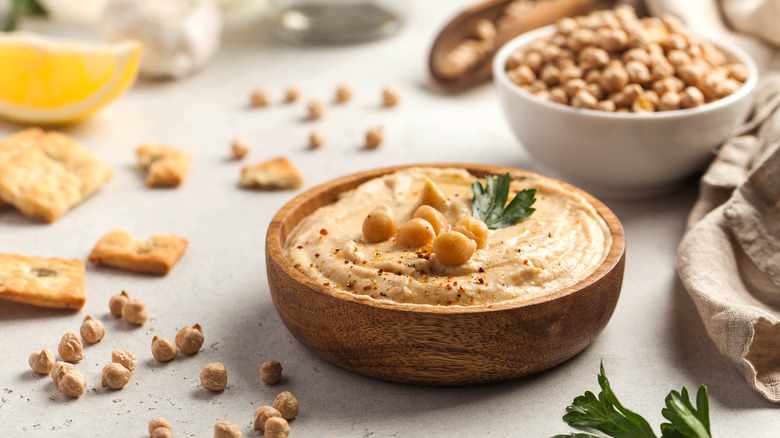Tips To Make Healthy Recipes More Exciting
Believe it or not, healthy eating is anything but boring. Simple things, such as trying out new ingredients and spicing up your meals, can make all the difference. Take avocados, for example. The fruit itself is pretty bland, but you can serve it with eggs, cottage cheese, smoked salmon, or mushrooms for extra flavor. Plus, it makes a great addition to smoothies, ice cream, salads, energy bars, or homemade desserts. In clinical trials, avocado consumption has been shown to improve nutritional status, facilitate weight loss, and increase good cholesterol levels — that's reason enough to give it a try, according to Nutrition Journal.
Note that it might take some time to acquire a taste for healthy foods. One Medical reports that potato chips, fries, pizza, and other hyper-palatable foods may be addictive, which explains why it's so hard to change our eating habits. On the positive side, it can take as little as three days to retrain our palate and learn to enjoy healthier options. Psychologist Uxshley Caracamo recommends starting with small changes, such as pairing new foods with old favorites. "It is important not to change too much at once ... As most of our food-related habits are subconscious, changing our food behaviors requires conscious effort. There is a limit to the amount of willpower we can use at one time," he told BBC Food.
Not sure where to start? Use the tips below to make healthy food more exciting and turn the ordinary into the extraordinary.
Spice up your meals for extra flavor
Chicken breast, spinach, brown rice, and other healthy foods are not particularly tasty, but you can use spices and herbs to enhance their flavor. For example, broccoli goes well with most spices, from garlic and ginger to sage and curry. Pair cauliflower with fennel, thyme, paprika, or dill to make it taste better, suggests OneGreenPlanet. Green beans can be served with mustard, chives, or even nutmeg, plus a drizzle of olive oil and lemon juice. Zucchinis are quite bland, but they will taste amazing with a pinch of salt and pepper, smoked paprika, or garlic powder.
Spices and herbs do more than just add flavor to your meals. Some also boast antioxidant, anti-inflammatory, or antimicrobial effects and keep your immune system strong. A good example is black cumin, a spice that goes well with meat, fish, rice, mushrooms, and veggies. When consumed regularly, black cumin seeds can reduce oxidative stress, inflammation, blood pressure, and blood sugar levels, according to Evidence-Based Complementary and Alternative Medicine. Over time, they may improve cognition and alleviate joint pain. Their anti-cancer, antiviral, and antifungal properties shouldn't be overlooked either.
Roast or grill your veggies to make them more appetizing
The U.S. Department of Agriculture recommends 2-3 cups of vegetables per day for women and 3 to 4 cups per day for men. Due to their high nutritional value, these foods may protect against cancer, obesity, heart disease, stroke, and other medical conditions. Yet, only one in 10 adults eats enough fruits and veggies, reports the Centers for Disease Control and Prevention. While it's true that steak, poultry, or fish tastes much better than spinach or cabbage, you should still eat your greens.
One way to increase their appeal is to roast or grill them. Cooking does destroy some of the vitamins and minerals in vegetables, but it also makes other nutrients more bioavailable, says The New York Times. Vitamin C and some B vitamins are particularly sensitive to heat. Lycopene levels, on the other hand, tend to increase when you cook tomatoes. "The fat-soluble red pigment found primarily in tomatoes is thought to have the highest antioxidant activity of all the carotenoids and antioxidant compounds, and [it] may reduce the risk of an assortment of diseases, from Alzheimer's to cancer," dietitian Elaine Magee told CNN.
Vary your protein sources for a nutritional kick
It's easy to get stuck in a rut when trying to eat more healthy. After all, we've all heard of athletes and famous people who eat the same meals every single day. While there's nothing wrong with eating meat or fish at most meals, you could be missing out on important nutrients that you can only get from plants. For example, animal foods are low in vitamin C and contain no fiber, starch, or flavonoids, such as quercetin and catechins, notes Healthline.
By eating a variety of protein sources, you'll get more nutrients in your diet and make your meals more appealing. Seafood, for instance, is chock-full of vitamin D and omega-3s, points out the USDA. Tofu offers over 17 grams of protein and half of the recommended daily calcium intake per 3.5 ounces, per My Food Data. The same amount of black beans has nearly 9 grams of protein and 9 grams of fiber. Lima beans provide around 8 grams of protein per 3.5 ounces, but you'll also get 11% of the recommended daily potassium intake.
If, say, you normally eat tuna salad for lunch, replace the fish with tofu, boiled eggs, black beans, or edamame. Use a variety of spices and experiment with new ingredients to make your meal more appetizing. Pickled jalapeno peppers, wild rice, avocado, radishes, turnips, seaweed, and nutritional yeast can turn your salad into a hearty meal that will keep you full for hours.



